Science and Technology: April 2025 Current Affairs | General Test Preparation for CUET UG - CUET Commerce PDF Download
Ripening Agents Used for Fruits

Artificial Ripening of Fruits
Natural Ripening:
- Fruits ripen naturally through senescence, which involves changes in color, texture, flavor, sugar content, and acidity.
- This process is influenced by the ripening hormone ethylene.
Artificial Fruit Ripening Agents:
Calcium Carbide:
- Releases toxic acetylene gas and may contain harmful substances like phosphorus and arsenic.
- Associated with severe health issues and carcinogenic risks.
- Its usage has been banned by the Food Safety and Standards Authority of India (FSSAI) under the Food Safety and Standards Regulations, 2011.
Permitted Substances:
Ethylene Gas:
- Approved by FSSAI for use up to 100 parts per million (ppm).
- Triggers natural ripening processes.
- Must be applied in controlled ripening chambers and should not come into direct contact with fruits.
Ethephon:
- A substance that releases ethylene upon breakdown.
- Used for artificial ripening under regulated conditions.
Ethereal:
- An ethylene-releasing compound used in controlled settings for artificial ripening.
India as Global Hub For Data Centres
 Why in News?
Why in News?
India’s data centre sector is experiencing remarkable growth, with projections indicating a doubling of its capacity by FY27. This expansion is fueled by factors such as digitalization, the integration of Artificial Intelligence (AI), the deployment of 5G, and the enforcement of data localization laws. However, challenges persist, including gaps in infrastructure, the necessity for sustainable power solutions, and competition from international players like China.
Key Takeaways
- India's data centre capacity is expected to rise from USD 4.5 billion in 2023 to USD 11.6 billion by 2032.
- India currently holds only 3% of global data centre capacity despite producing 20% of global data.
- Over 50% of data centre capacity is concentrated in Mumbai, with emerging hubs in smaller cities.
Additional Details
- What are Data Centres? Data centres are specialized facilities that store, manage, and process large volumes of electronic data. They contain critical Information Technology (IT) infrastructure, including servers, storage devices, and networking equipment, along with systems for cooling, power supply, and security.
- Components of a Data Centre: Key components include servers and storage systems for hosting websites and cloud storage, networking equipment like routers and firewalls, power supply systems including UPS, cooling systems to prevent overheating, and security infrastructure to protect against data breaches.
India's data centre market is projected to reach significant economic milestones, driven by increasing digitalization, the RBI's data localization mandate, and the rollout of AI and 5G technologies. The sector will likely create investment opportunities and generate substantial economic activity.
Challenges Hindering Growth
- Infrastructure Constraints: Issues like unreliable power supply and limited connectivity raise costs and risks, especially for data centres in non-metro areas.
- Environmental Sustainability: The industry faces pressure to adopt renewable energy and sustainable technologies to reduce carbon emissions.
- Cybersecurity Threats: Data centres are prime targets for cyberattacks, necessitating robust cybersecurity measures to protect sensitive information.
In conclusion, while India has the potential to become a key player in the global data centre market, addressing infrastructure challenges and enhancing cybersecurity measures is essential for sustainable growth. With the right policies and investments, India can emerge as a leading data centre hub in the near future.
Drishti Mains Question:
Discuss the growth, challenges, and opportunities in India's data center sector and its role in advancing the country's digital economy.
Japan Created 3D-Printed Train Station
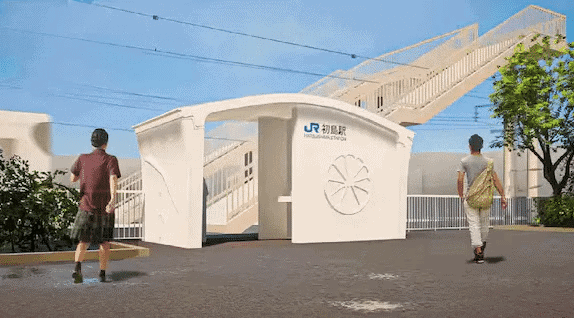
3D Printed Train Station in Japan
- The West Japan Railway Company has introduced what it claims to be the world’s first 3D-printed train station in Arida, Japan.
What is 3D Printing?
- 3D printing, also known as additive manufacturing, is a method used to create three-dimensional objects from a digital file.
- The process involves adding material layer by layer until the entire object is constructed. This is different from subtractive manufacturing, where material is removed from a solid block, like in milling.
Benefits of 3D Printing
- Quick Realization of Ideas: Designers can bring a 3D model to life immediately.
- Reduced Dependence on Workforce: Especially important for countries like Japan with a shrinking workforce.
- On-Demand Customization: Customization can be done rapidly without overhauling the entire manufacturing process.
- Cost Savings: Reductions in material costs, labor, operational efficiency, and inventory and warehousing expenses.
- Design Flexibility: Allows for the incorporation of complex shapes and structures.
- Eco-Friendly: Supports sustainable practices, on-demand production, and improved product quality.
Uses of 3D Printing
- Manufacturing: Used for creating consumer products like eyewear and industrial items such as tools and prototypes.
- Advanced Healthcare: Custom prosthetics and bioprinting organs, like organ-on-a-chip technologies.
- Construction: Used for making architectural models and facilitating faster and more precise construction.
- Historical Research: Aids in reconstructing fossils and replicating ancient artifacts.
- Forensic Science: Helps in reconstructing evidence for forensic investigations.
GenomeIndia Project Overview
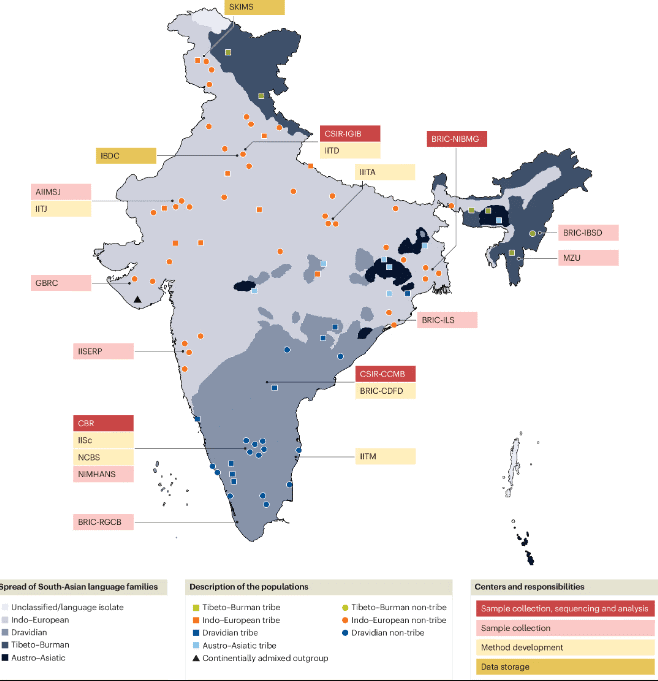
Why in News?
The journal Nature Genetics recently published findings from the GenomeIndia project, which successfully sequenced the entire genomes of approximately 10,000 individuals from 85 distinct population groups in India. This includes 32 tribal and 53 non-tribal populations, representing major ethnic groups across the country. The study uncovered 180 million genetic variants, comprising 130 million on autosomes (non-sex chromosomes) and 50 million on sex chromosomes (X and Y). Notably, some of these variants are linked to diseases, while others are rare or unique to specific communities in India.
Key Takeaways
- The GenomeIndia project was launched in 2020 by the Department of Biotechnology (DBT).
- It aims to map the genetic diversity of the Indian population.
- Over 20 leading institutions collaborated to sequence 10,000 genomes in the initial phase.
- The data is stored in the Indian Biological Data Centre (IBDC), which is India's first national life sciences data repository.
Additional Details
- Genome India Project: This initiative is focused on building a comprehensive reference genome for Indian populations. It seeks to address the underrepresentation of Indian genomic data in global databases, significantly enhancing India’s role in international genomics research.
- Indian Biological Data Centre (IBDC): Established at the Regional Centre of Biotechnology (RCB) in Faridabad, IBDC is supported by the DBT and the National Informatics Centre (NIC). It serves as a crucial repository for genomic data.
- Genome Sequencing: This refers to the process of determining the complete sequence of nucleotide bases in an organism’s genome, which includes whole-genome, partial genome, or targeted gene sequencing. Whole Genome Sequencing (WGS) provides the most comprehensive genetic blueprint.
In summary, the GenomeIndia project represents a significant step towards understanding the genetic landscape of India, paving the way for future research and advancements in personalized medicine and public health.
US to Build Small Modular Reactors in India
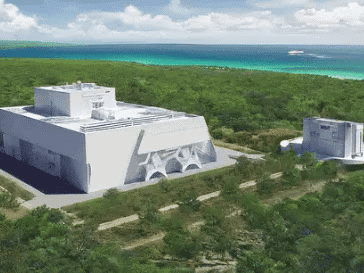
Why in News?
The United States has approved Holtec International to transfer unclassified Small Modular Reactor (SMR) technology to three private entities in India under its regulation 10CFR810. This development marks a significant step in international nuclear cooperation.
Key Takeaways
- The authorization is valid for 10 years and subject to review every five years.
- Technology transfer is restricted to peaceful civilian uses and must adhere to International Atomic Energy Agency (IAEA) safeguards.
- This deal revitalizes the 2008 India-US Civil Nuclear Deal, overcoming previous legal and commercial hurdles.
- It represents the first direct technology transfer from the US to Indian private firms.
- The initiative supports India's ambition to become a hub for nuclear innovation and exports.
Additional Details
- Operational Framework: The technology can only be utilized for civilian purposes, ensuring that it aligns with global non-proliferation standards.
- Legal and Policy Challenges: Existing laws, such as the Civil Liability for Nuclear Damage Act, 2010, pose challenges by holding suppliers liable for nuclear incidents, which can deter foreign investment.
- The Atomic Energy Act of 1962 restricts nuclear operations to government entities, limiting private sector involvement.
- To address these issues, the Indian government is forming inter-ministerial committees to amend relevant laws and allow for private sector participation in nuclear energy.
Small Modular Reactors (SMRs) are advanced nuclear reactors with a capacity of up to 300 MW(e), roughly one-third the size of conventional reactors. They are designed to be compact, factory-assembled, and easily transportable, making them well-suited for remote or confined locations. Examples include NuScale from the USA and CAREM from Argentina.
Key Features of SMRs
- SMRs are significantly smaller than traditional nuclear reactors.
- They consist of factory-built components that can be shipped and assembled on-site.
- These reactors use nuclear fission to generate heat, which is then converted into electricity.
Advantages of SMRs
- Fuel Efficiency: SMRs require refueling every 3-7 years, unlike conventional plants that need refueling every 1-2 years.
- Scalability & Flexibility: They can be integrated into various power systems and scaled to meet the needs of remote or urban areas.
- They reduce dependence on rare reactor-grade fuels and advanced enrichment processes.
- Passive Safety: SMRs are designed with inherent safety systems that enhance their resilience to accidents.
- Low-Carbon & Reliable: They provide continuous clean energy, supporting the grid and helping to achieve net-zero goals by 2070.
As part of the Union Budget 2025-26, India has announced a Nuclear Energy Mission focusing on the research and development of SMRs, aiming to develop at least five indigenously designed and operational SMRs by 2033. The Bharat Small Reactors (BSRs) will be 220 MW Pressurized Heavy Water Reactors (PHWRs) deployed near industrial sites to assist in decarbonization efforts. Private companies will supply land, cooling water, and funding, while the NPCIL will manage design, quality assurance, and operations.
This initiative aligns with India’s COP26 commitment to achieve 500 GW of non-fossil fuel-based energy and to ensure that 50% of its energy comes from renewable sources by 2030.
Additionally, the Bhabha Atomic Research Centre (BARC) is working on SMRs to repurpose retiring coal-based power plants and meet energy demands in remote areas. The Department of Atomic Energy (DAE) is also exploring various reactor designs, including high-temperature gas-cooled reactors and molten salt reactors, to leverage India’s abundant thorium resources.
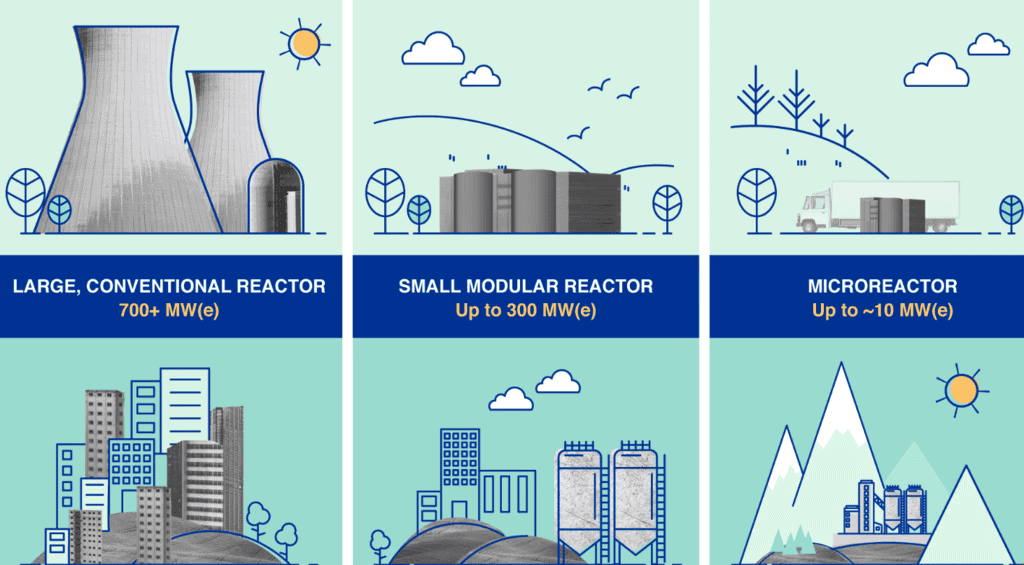

HALEU Fuel Cycle as an Alternative to FBRs
Why in News?
India's three-stage nuclear power program is currently facing significant delays in the deployment of Fast Breeder Reactors (FBRs). In light of these challenges, the former chief of the Bhabha Atomic Research Centre (BARC) has proposed the use of High Assay Low Enriched Uranium (HALEU) and thorium as fuel to optimize the utilization of existing Pressurized Heavy Water Reactors (PHWRs).
Key Takeaways
- Integration of HALEU with existing PHWRs can enhance India's nuclear energy program.
- Recycling spent fuel from HALEU-thorium reactors contributes to sustainability and waste reduction.
Additional Details
- Using PHWRs with HALEU: India aims to incorporate a mix of HALEU, which is uranium enriched between 5% and 20% U-235, into its existing 700 MWe PHWRs. This strategy allows for the earlier utilization of thorium, promoting a more sustainable nuclear power generation.
- Recycling Spent Fuel: The spent fuel generated from PHWRs that utilize HALEU-thorium can be reprocessed to reclaim valuable fissile materials, which can then be employed in advanced reactors like Molten Salt Reactors (MSRs). This process enhances the efficiency of the nuclear fuel cycle and supports the long-term sustainability of India's nuclear energy landscape.
In summary, the integration of HALEU with thorium into India's nuclear program presents a promising pathway to overcome the current challenges faced in the deployment of FBRs, ensuring optimal fuel use and contributing to the sustainability of nuclear energy in the country.
What is India's 3-Stage Nuclear Power Programme?
India's three-stage nuclear power program, designed by Homi Bhabha, aims to secure long-term energy needs by efficiently utilizing limited uranium resources alongside abundant thorium reserves. This phased approach is intended to develop nuclear energy in a sustainable and self-reliant manner.
| Stage | Aim | Fuel/Coolant/Moderator | Nuclear Reactor | Current Status |
|---|---|---|---|---|
| Stage-1 | Generate electricity while producing plutonium-239 (Pu-239) as a byproduct. | Uranium (U-238) Moderator: Heavy water (deuterium oxide) | Pressurized Heavy Water Reactors (PHWRs) | India has constructed 18 PHWRs, serving as the foundation of its nuclear power infrastructure. |
| Stage-2 | Focus on reactors that utilize plutonium generated from the first stage to produce more fissile material than consumed. | Mixed Oxide of Plutonium-239 and Uranium-238 | Prototype FBR at Kalpakkam, Tamil Nadu | Key developments are ongoing in this stage. |
| Stage-3 | Develop Thorium Reactors which use Thorium-232 to produce uranium-233, a fissile material. | Thorium-Based Reactors (Thorium Cycle) | Research into thorium-based reactors is ongoing, with the Advanced Heavy Water Reactor (AHWR) being developed. | Continued advancements are being made in this stage. |
Bird Flu Overview
Why in News?
A recent case of bird flu has been reported in Andhra Pradesh, marking India's second recorded human fatality from the H5N1 strain since 2021.
Key Takeaways
- Bird flu is a highly contagious viral infection that primarily impacts birds.
- Human cases are rare but can have a high fatality rate, approximately 60% for H5N1.
- Transmission to humans typically occurs through direct contact with infected birds.
Additional Details
- What is Bird Flu? Bird flu, also known as avian influenza, is caused by avian influenza A viruses, with subtypes like H5N8 being particularly significant.
- History of Human Cases: The first human infections were documented in 1997 in Hong Kong, with most cases occurring in Asia due to close contact with infected birds.
- As of February 2025, the World Health Organization (WHO) has confirmed 972 cases of H5N1 influenza.
- Transmission: H5N1 spreads mainly through direct contact with infected birds or contaminated environments, such as live bird markets. Airborne transmission has not been confirmed in humans, and human-to-human transmission remains extremely rare.
- Symptoms: Common symptoms include high fever, cough, sore throat, and muscle aches, with severe cases potentially leading to respiratory failure or neurological complications.
- Treatment: Antiviral medications like oseltamivir can be effective, particularly when administered early in high-risk cases.
- Vaccination: Current seasonal flu vaccines do not protect against H5N1, but some countries have developed specific vaccines for emergency use.
Given the potential for H5N1 to mutate and enable sustained human-to-human transmission, it is classified as a priority disease under the WHO R&D Blueprint. Continuous monitoring and preventive measures are crucial to manage the risk associated with this virus.
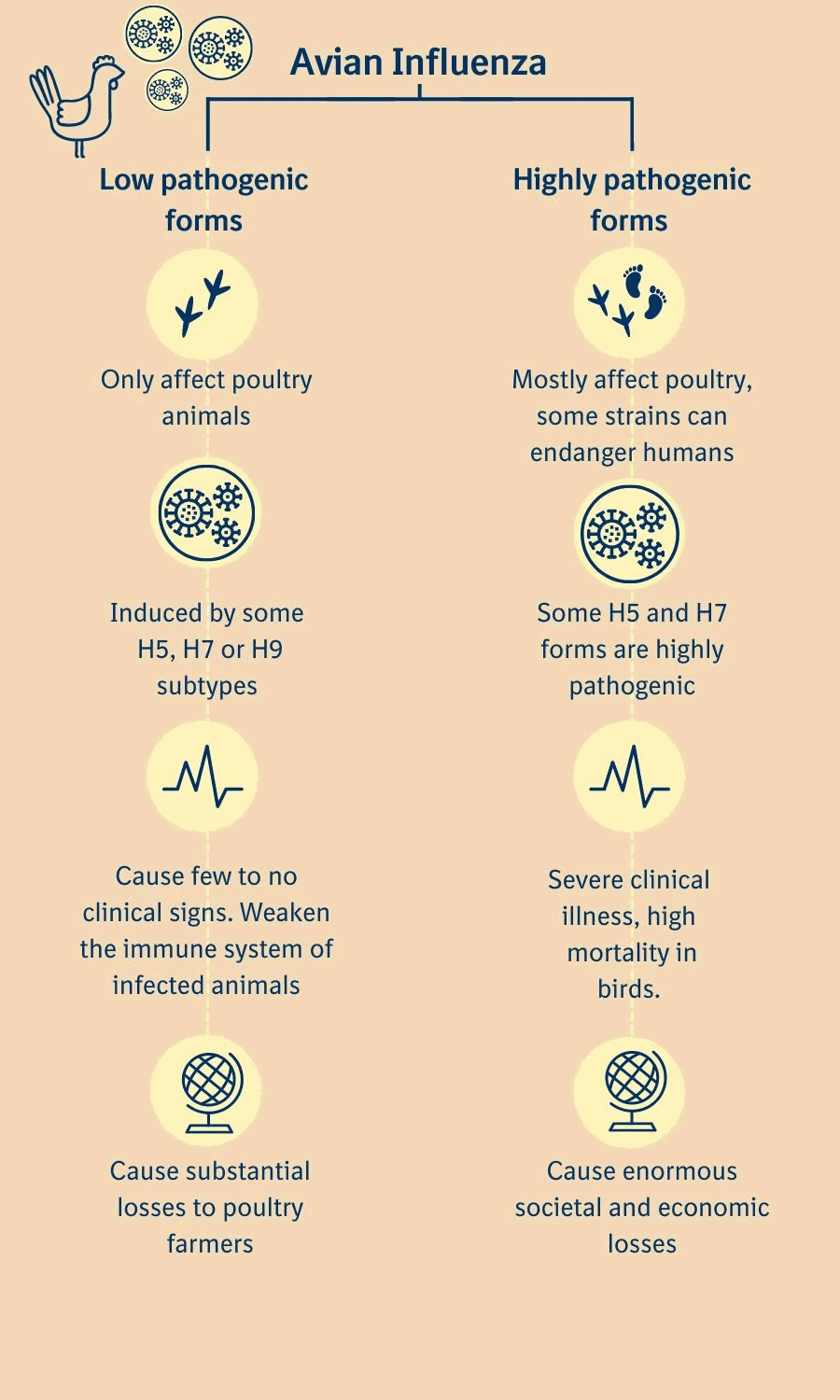
|
164 videos|798 docs|1153 tests
|
















